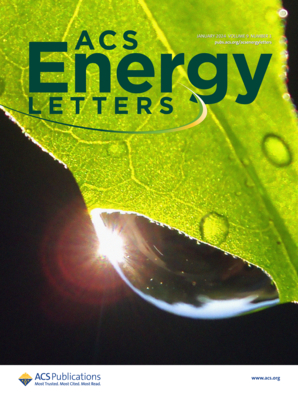Quantitatively Mapping Inhomogeneous State of Charge in a Commercial Lithium-Ion Pouch Cell via Energy-Resolved Neutron Imaging
IF 18.2
1区 材料科学
Q1 CHEMISTRY, PHYSICAL
引用次数: 0
Abstract
The booming electric vehicle market is fueling demand for higher energy density and enhanced safety in lithium-ion batteries. State of charge (SOC), a critical metric for assessing battery performance, provides insights into the energy status, health, and safety of the battery. Commercial cells often exhibit heterogeneous SOC distributions that are challenging to measure. We employ advanced energy-resolved neutron imaging to achieve quantitative SOC mapping of a commercial 2.5 Ah LiFePO4||graphite pouch cell charged under a controlled temperature field (0–23 °C). Our findings show that higher temperature regions have more LiC6, indicating higher SOC levels. Synchrotron high-energy X-ray diffraction confirmed this distribution and its correlation with the cathode. A high-throughput analysis of SOC–temperature correlations using polynomial regression on 4000 experimental data points achieved an R2 value of 0.9823, demonstrating robust modeling. This research underscores neutron imaging’s role in nondestructive mapping and machine learning applications for advancing battery detection technologies and improving performance predictions.

利用能量分辨中子成像技术定量映射商用锂离子袋状电池中的非均匀电荷状态
蓬勃发展的电动汽车市场正在推动对更高能量密度和增强安全性的锂离子电池的需求。充电状态(SOC)是评估电池性能的关键指标,可深入了解电池的能量状态、健康状况和安全性。商用电池通常表现出异构的SOC分布,难以测量。我们采用先进的能量分辨中子成像技术,实现了在受控温度场(0-23℃)下充电的商用2.5 Ah LiFePO4||石墨袋电池的定量SOC映射。我们的研究结果表明,高温区域有更多的LiC6,表明更高的SOC水平。同步加速器高能x射线衍射证实了这种分布及其与阴极的相关性。在4000个实验数据点上使用多项式回归对soc -温度相关性进行高通量分析,R2值为0.9823,证明了模型的鲁棒性。这项研究强调了中子成像在无损测绘和机器学习应用中的作用,以推进电池检测技术和改进性能预测。
本文章由计算机程序翻译,如有差异,请以英文原文为准。
求助全文
约1分钟内获得全文
求助全文
来源期刊

ACS Energy Letters
Energy-Renewable Energy, Sustainability and the Environment
CiteScore
31.20
自引率
5.00%
发文量
469
审稿时长
1 months
期刊介绍:
ACS Energy Letters is a monthly journal that publishes papers reporting new scientific advances in energy research. The journal focuses on topics that are of interest to scientists working in the fundamental and applied sciences. Rapid publication is a central criterion for acceptance, and the journal is known for its quick publication times, with an average of 4-6 weeks from submission to web publication in As Soon As Publishable format.
ACS Energy Letters is ranked as the number one journal in the Web of Science Electrochemistry category. It also ranks within the top 10 journals for Physical Chemistry, Energy & Fuels, and Nanoscience & Nanotechnology.
The journal offers several types of articles, including Letters, Energy Express, Perspectives, Reviews, Editorials, Viewpoints and Energy Focus. Additionally, authors have the option to submit videos that summarize or support the information presented in a Perspective or Review article, which can be highlighted on the journal's website. ACS Energy Letters is abstracted and indexed in Chemical Abstracts Service/SciFinder, EBSCO-summon, PubMed, Web of Science, Scopus and Portico.
 求助内容:
求助内容: 应助结果提醒方式:
应助结果提醒方式:


